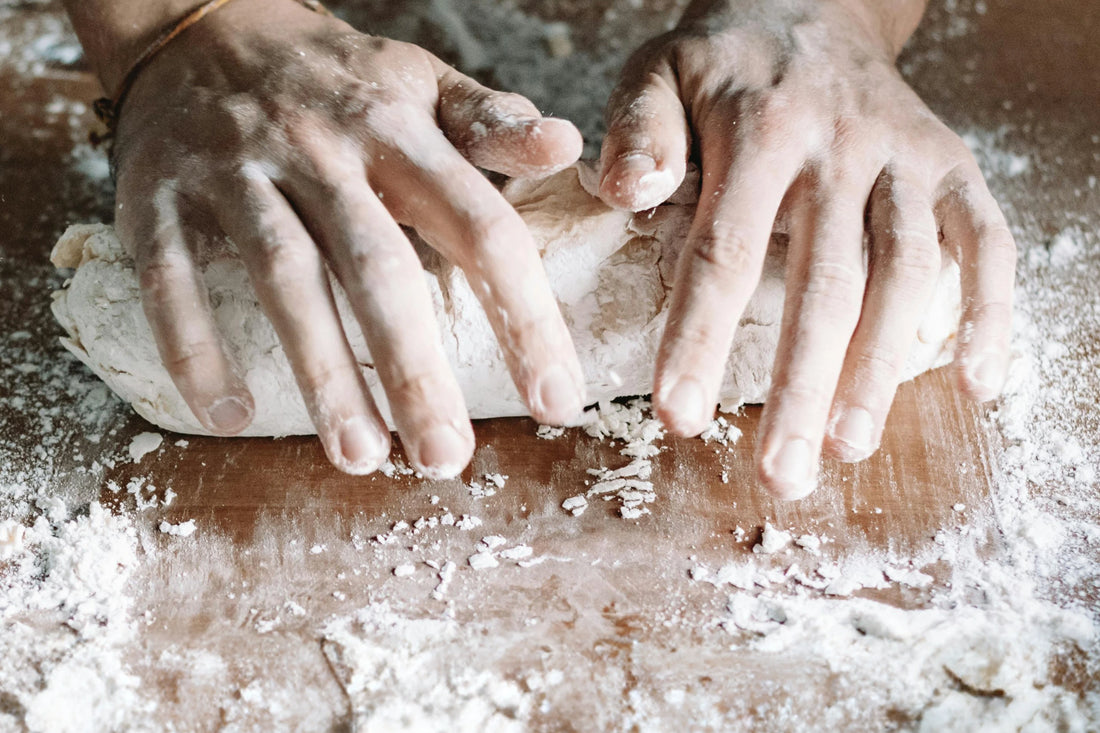
Hand-Made vs. Mixer-Made Dough
Share
Ever wondered why hand-made dough often feels different from the dough you make in a mixer? It turns out, there's a fascinating blend of science and tradition at play. In this post, we delve into four simple dough preparation methods aimed at mimicking the rheological behaviors of traditional hand-made doughs. By understanding these methods, we can uncover the secrets behind the perfect dough consistency and strength.
As discussed in "The Science Behind a Perfect Pie Crust (and Why Your Rolling Pin Matters)", achieving the ideal dough texture involves a delicate balance of factors like temperature, gluten development, and rolling technique. This is especially true when comparing hand-made and mixer-made doughs.
The Dough Variants
Researchers have identified several types of hand-made doughs, each with unique characteristics:
Conventional Hand-Made Dough (CHD)
Bidirectional Pressed Dough (BPD)
Bidirectional Rolled Dough (BRD)
Unidirectional Pressed Dough (UPD)
Unidirectional Rolled Dough (URD)
These variants were compared with mixer-made dough to determine their mechanical resistance and other properties.
Key Findings
It was found that hand-made doughs generally exhibited weaker mechanical resistance compared to mixer-made dough. However, there were notable differences among the hand-made variants themselves. Specifically, BPD and URD showed superior tensile resistance and deformation recovery compared to UPD and BRD. This suggests that the method of pressing or rolling can significantly impact the dough's mechanical properties.
Confocal Laser Scanning Microscopy (CLSM) analysis provided insights into the gluten network within the doughs. BPD and URD had smaller lacunarity (a measure of texture complexity) and larger branching rates, indicating better gluten network connectivity. This connectivity is crucial for the dough's elasticity and strength. As highlighted in "The Secret Life of Gluten: How Rolling Transforms Your Dough", the act of rolling can dramatically affect gluten development and behavior.
Conclusion
The research highlighted the significant impact of manual external forces on dough quality. By analyzing the gluten network and protein interactions, we can quantitatively evaluate the microstructural changes in dough. These findings offer a theoretical basis for the superior qualities of hand-made doughs, providing valuable insights for both home bakers and professional chefs aiming to perfect their dough-making techniques. With the innovative Rolling Wonder rolling pin, which combines the best features of American and French designs, bakers can achieve optimal control and durability, enhancing the overall quality of their handmade doughs.
Why It Matters
Understanding these mechanisms is not just academic. For bakers, knowing how different methods affect dough can help in choosing the right technique for the desired outcome, whether it's a chewy pizza crust, a fluffy loaf of bread, or delicate pastry. So, next time you're kneading dough by hand, remember: there's a lot more science involved in that rhythmic motion than meets the eye. Happy baking!
References:
Yang, Y. et al. (2022) ‘Mechanical action on the development of dough and its influence on rheological properties and protein network structure’, Food Research International, 158, p. 111495. https://www.sciencedirect.com/science/article/abs/pii/S0963996922005531
